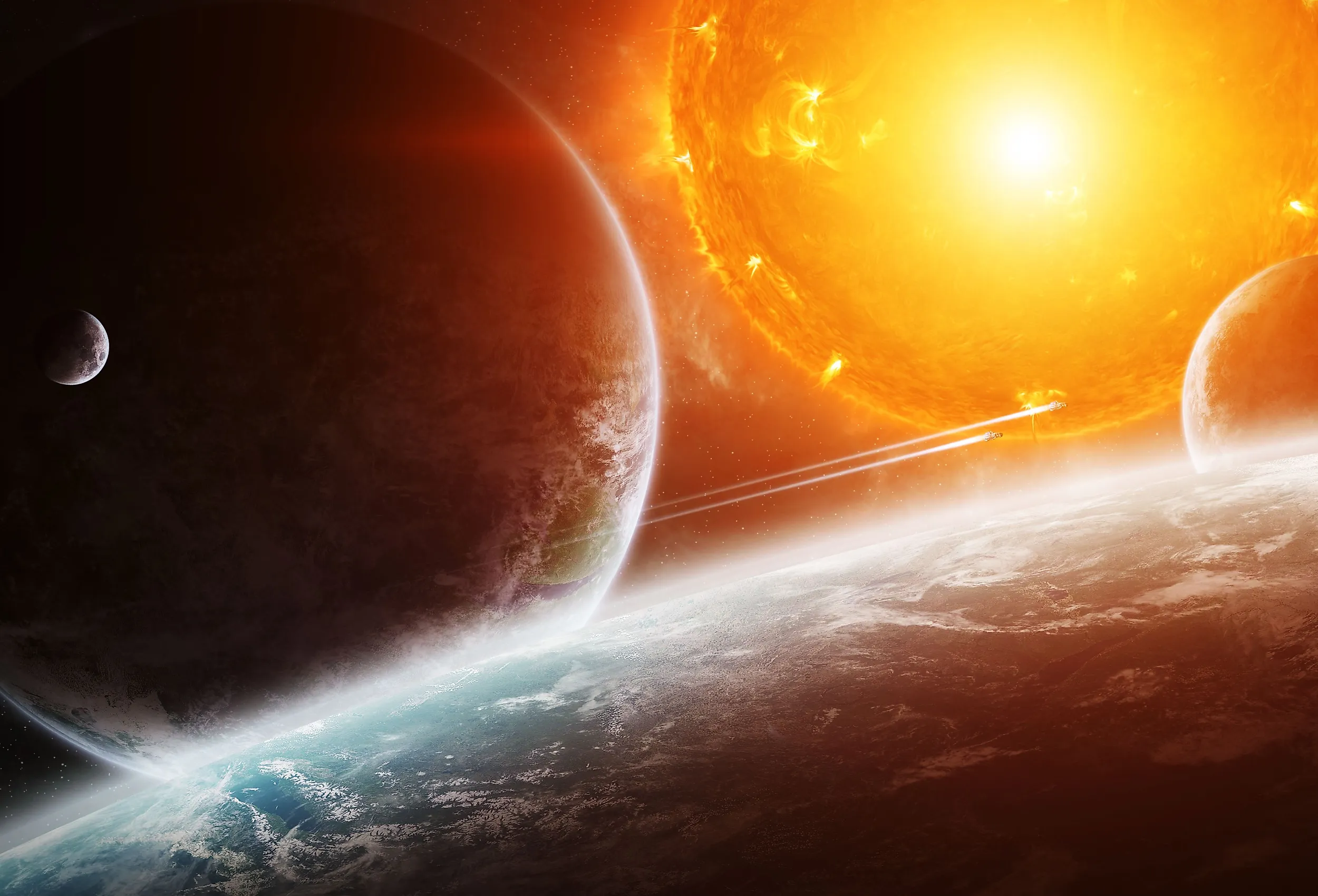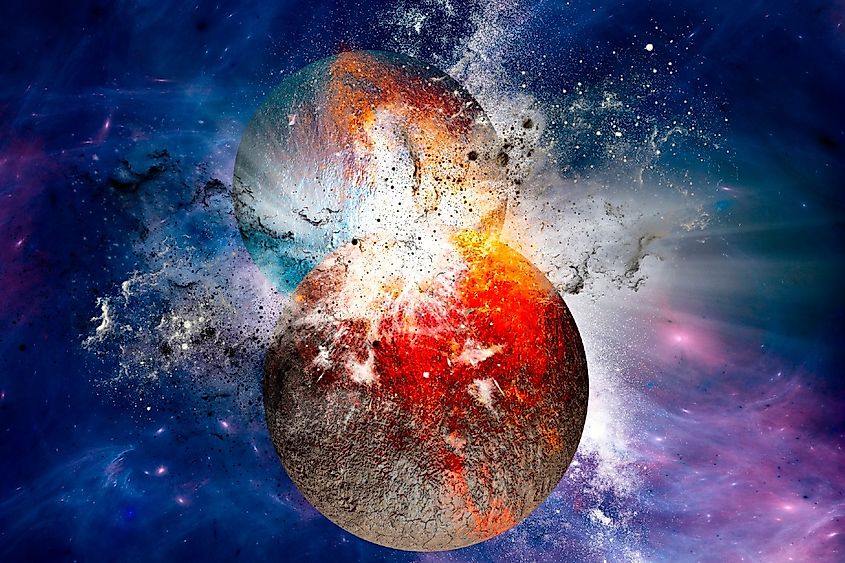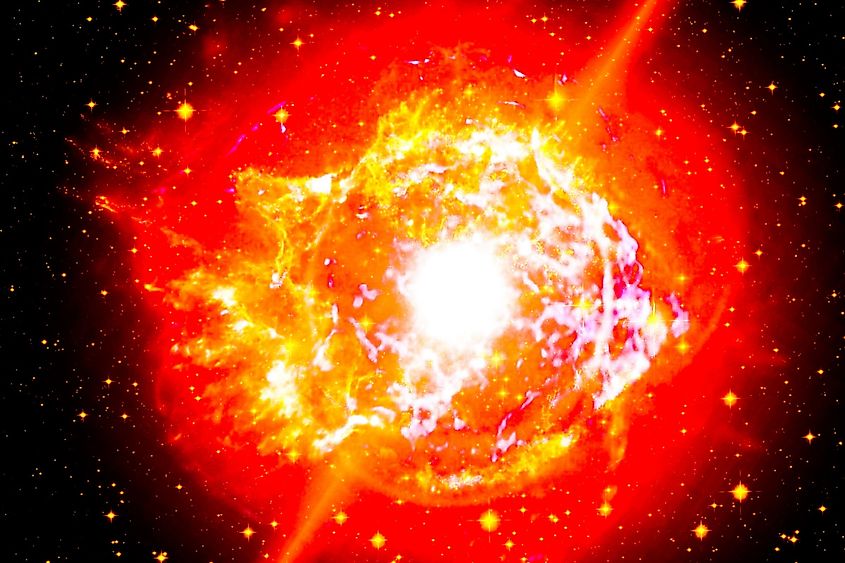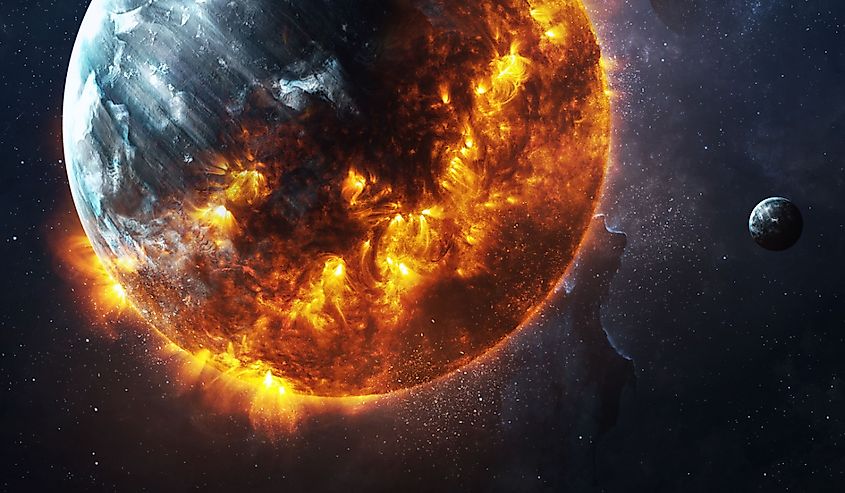
Stars Can Eat Their Planets: How and Why It Happens
The universe is both a beautiful and destructive place. Across the cosmos, stars and planets form within massive galaxies. These stars may shine for many billions of years, offering their planets stability for countless generations. However, on occasion, stars may devour their own planets. This can happen in a multitude of different ways, from planets gradually losing orbital energy to a star expanding and swallowing any nearby planets.
Planets in Young Solar Systems

Some planets eaten by their stars are devoured during the formation of a solar system. While most solar systems contain only one to eight planets on average, there can be as many as a hundred planets during a solar system’s formation. With so many planets orbiting a single star, it is difficult for them to fall into stable orbits. Rather, planets will collide with one another, some will be flung from the solar system entirely, and others will fall towards their star and be destroyed. This likely happens with most solar systems during their formation, and it may have even happened in our solar system.
Planets Around Dying Stars

The most common way in which stars eat their planets is during the end of a star’s life. Stars are powered by the nuclear fusion of hydrogen within their cores, and while stars contain vast amounts of hydrogen, it eventually runs out. What happens next is dependent upon the mass of a star, with lower-mass stars expanding and becoming red giants, and high-mass stars exploding in supernovae. Regardless of what stellar death occurs, planets orbiting near the star are usually doomed. When a star becomes a red giant, it can expand many times larger than its original size, engulfing any planets that happen to orbit too close. A supernova will also destroy any nearby planets, as well as damage those that orbit further away.
Decaying Orbits

Another way in which stars eat their planets is through the gradual decay of their orbit. Orbital decay can happen due to a multitude of factors, such as friction caused by an atmosphere, gravitational tidal energy, and electromagnetic drag. Some planets may also fall into unstable orbits, and over time they will gradually move closer to their star. The process gradually becomes faster, as the closer a planet moves to its star, the stronger that star’s gravitational pull becomes on the planet. While these events can be rare and hard to spot, astronomers have been lucky enough to find evidence of star-planet collisions. A recent study by scientists at MIT found observational evidence of a planet crashing into its star. The solar system in question is 12,000 light years away, and for a brief period of time, astronomers observed the star increase in brightness very abruptly. The planet had exploded, resulting in an abrupt increase in the amount of light near the star. Further observations revealed that the star had just consumed a Jupiter-sized world.
Some of the factors that can cause orbital decay are:
-
- Friction caused by an atmosphere
- Gravitational tidal energy
- Electromagnetic drag
The Future of Our Solar System
Stars can eat their planets in multiple different ways, yet what does this mean for our solar system and Earth? As a medium-mass star, the sun will eventually run out of hydrogen fuel and expand to become a red giant, swelling many times larger than its current size. While this won’t occur for at least another 4.5 billion years, when it does, the sun will likely engulf the orbits of Mercury and Venus. Depending on how large the sun becomes, it may even devour the Earth. Even if the sun does not grow larger enough to eat our home world, the distance between our planet and the sun will be reduced to such an extent that life on Earth will be impossible. Thankfully, this won’t happen for a very long time.
Further Reading
- MacLeod M., et al. (2023). A planet colliding with its host star: Signatures of an outburst from ASASSN-18jd. The Astrophysical Journal Letters.
- Ricker G., et al. (2023). Transiting Exoplanet Survey Satellite (TESS). Journal of Astronomical Telescopes, Instruments, and Systems.
- The Cosmic Companion (2023). When Stars Eat Planets: A Conversation with Dr. Morgan MacLeod. Retrieved from https://thecosmiccompanion.net/when-stars-eat-planets-a-conversation-with-dr-morgan-macleod











